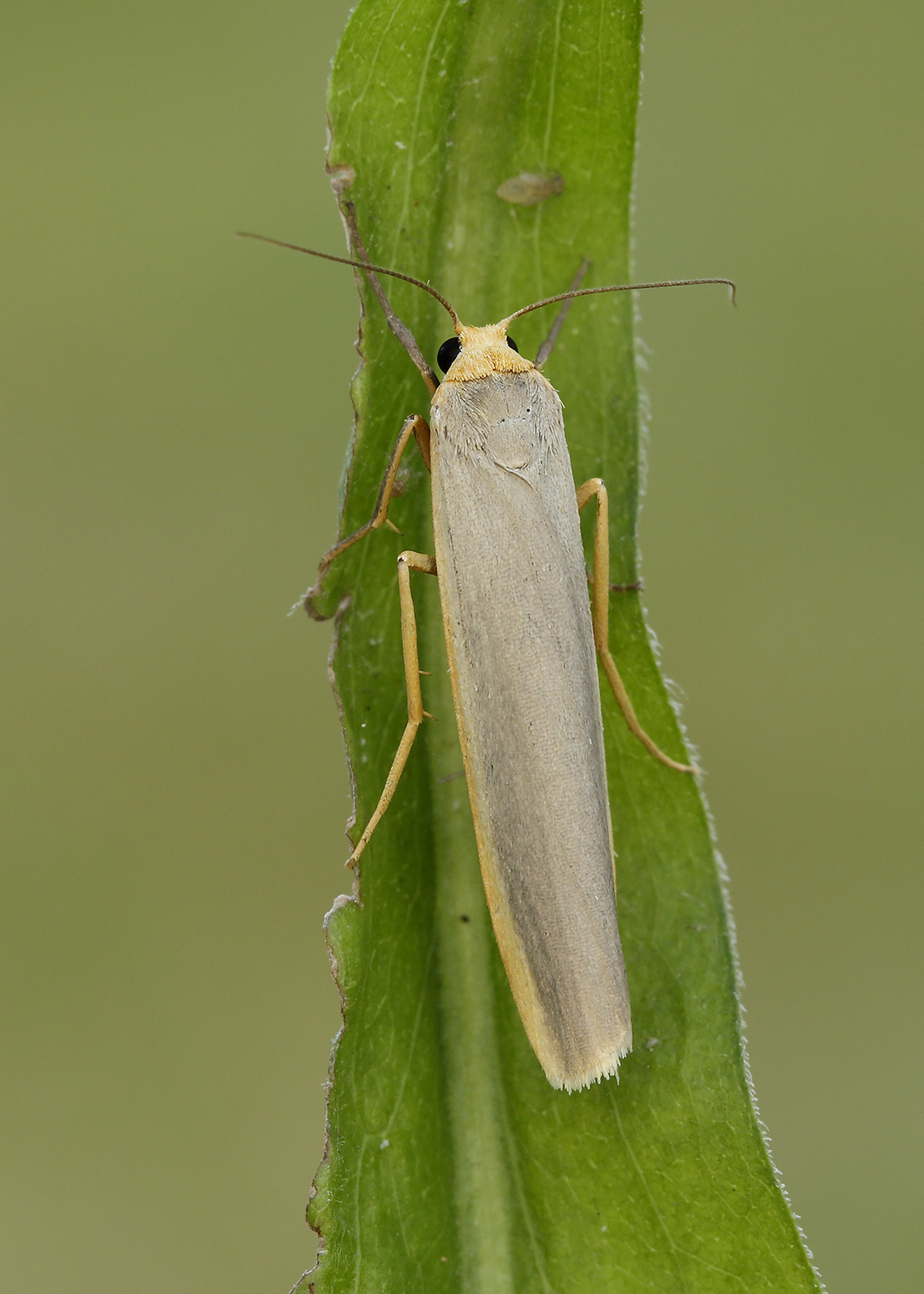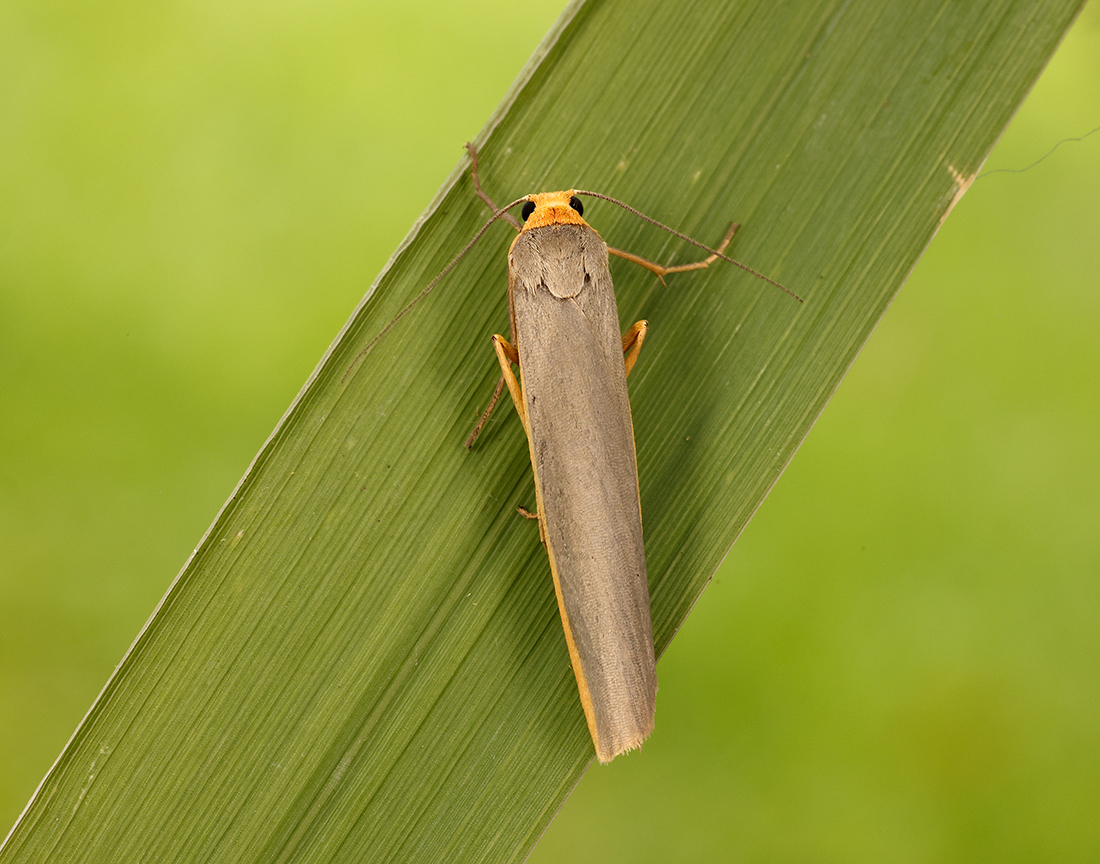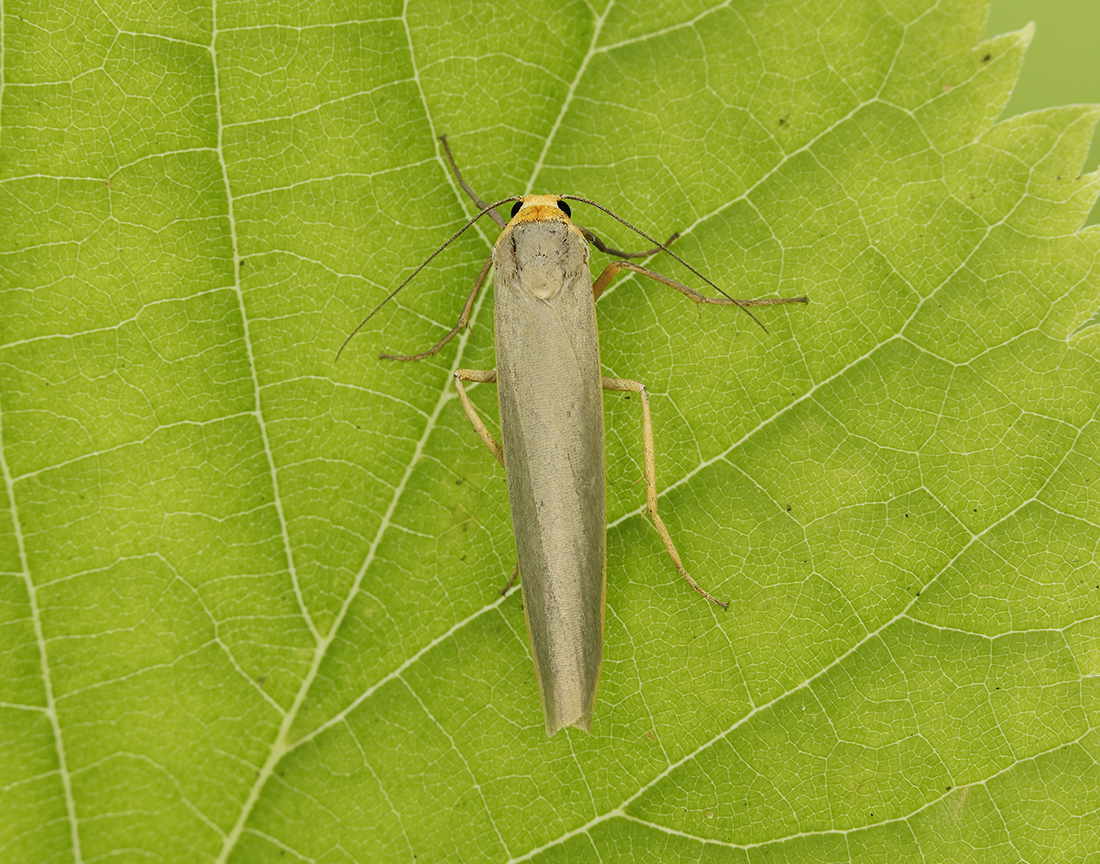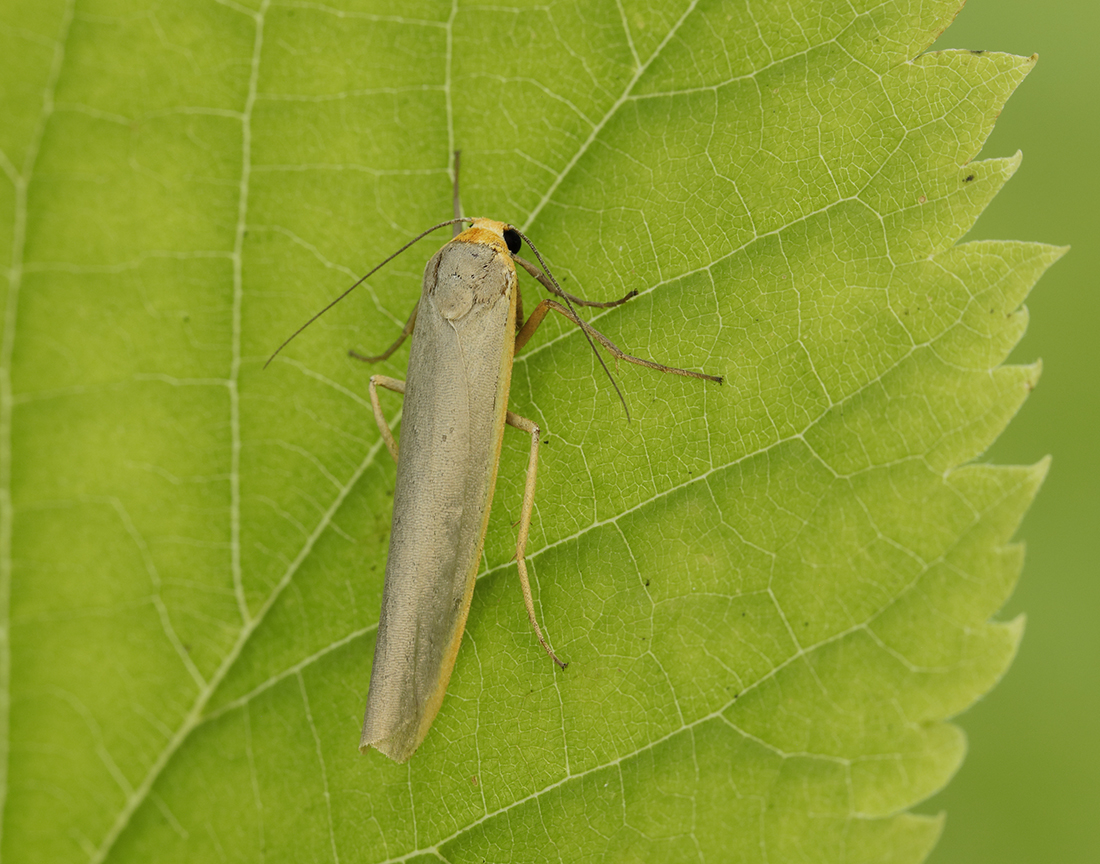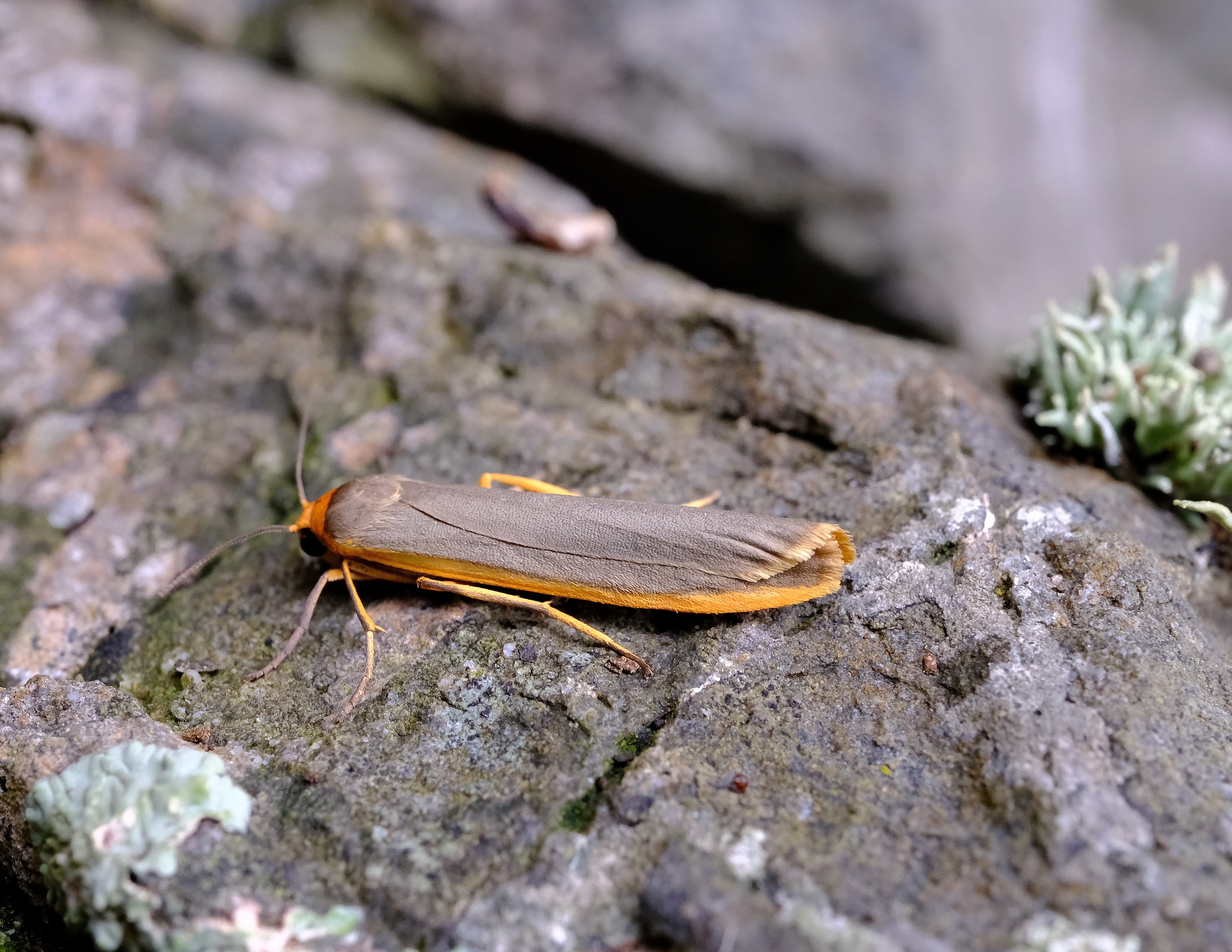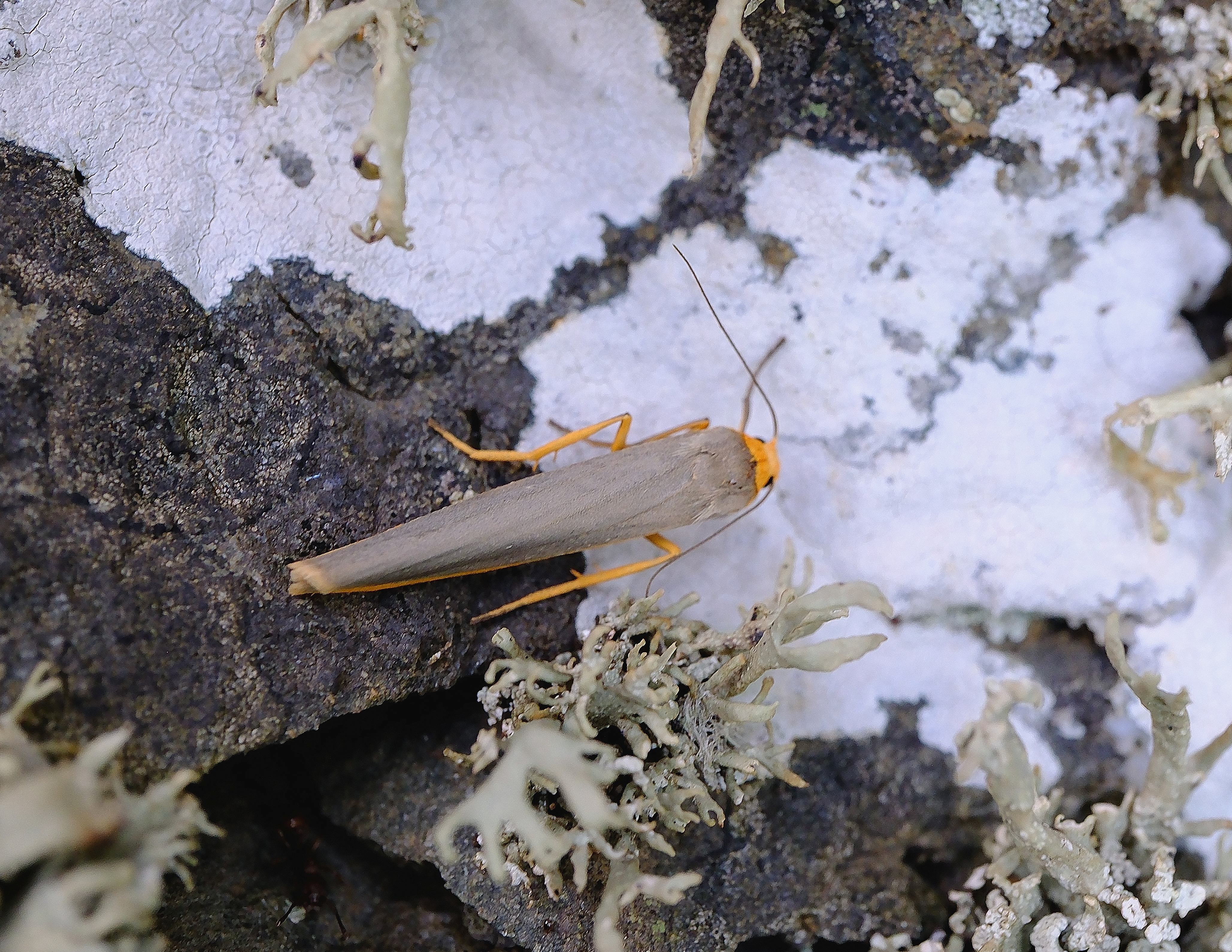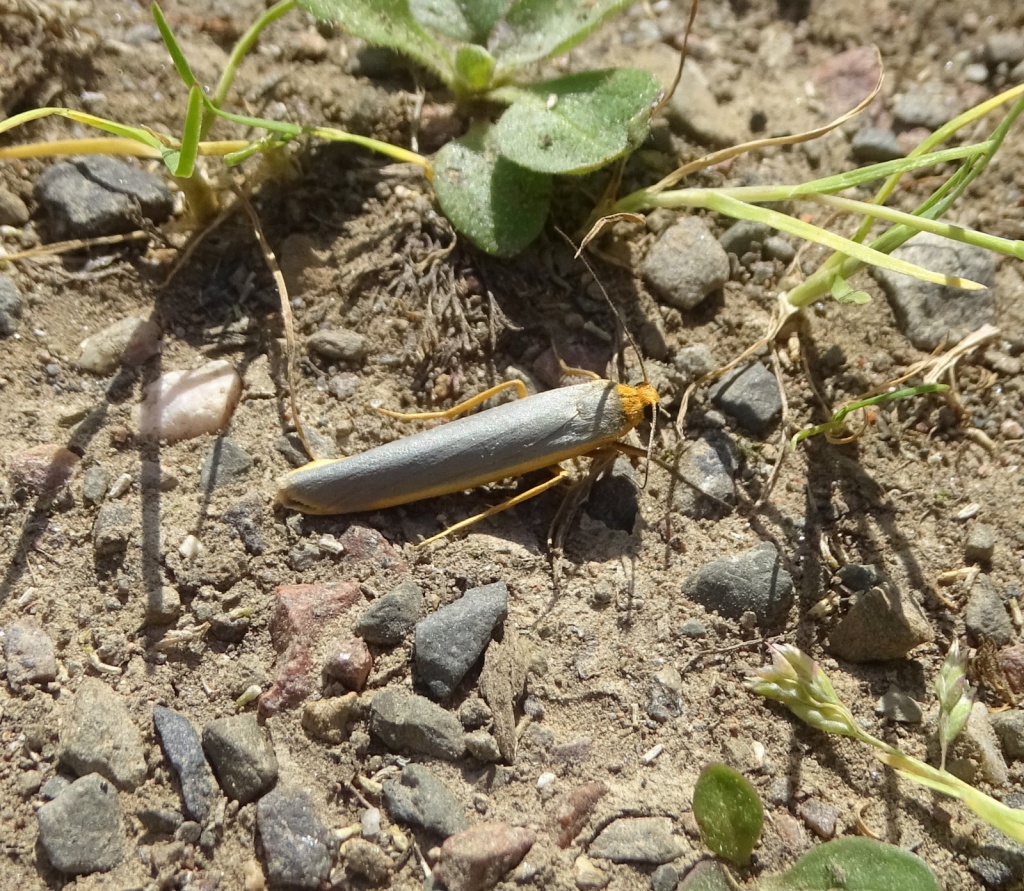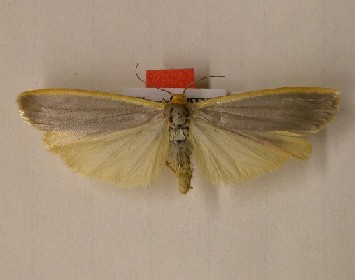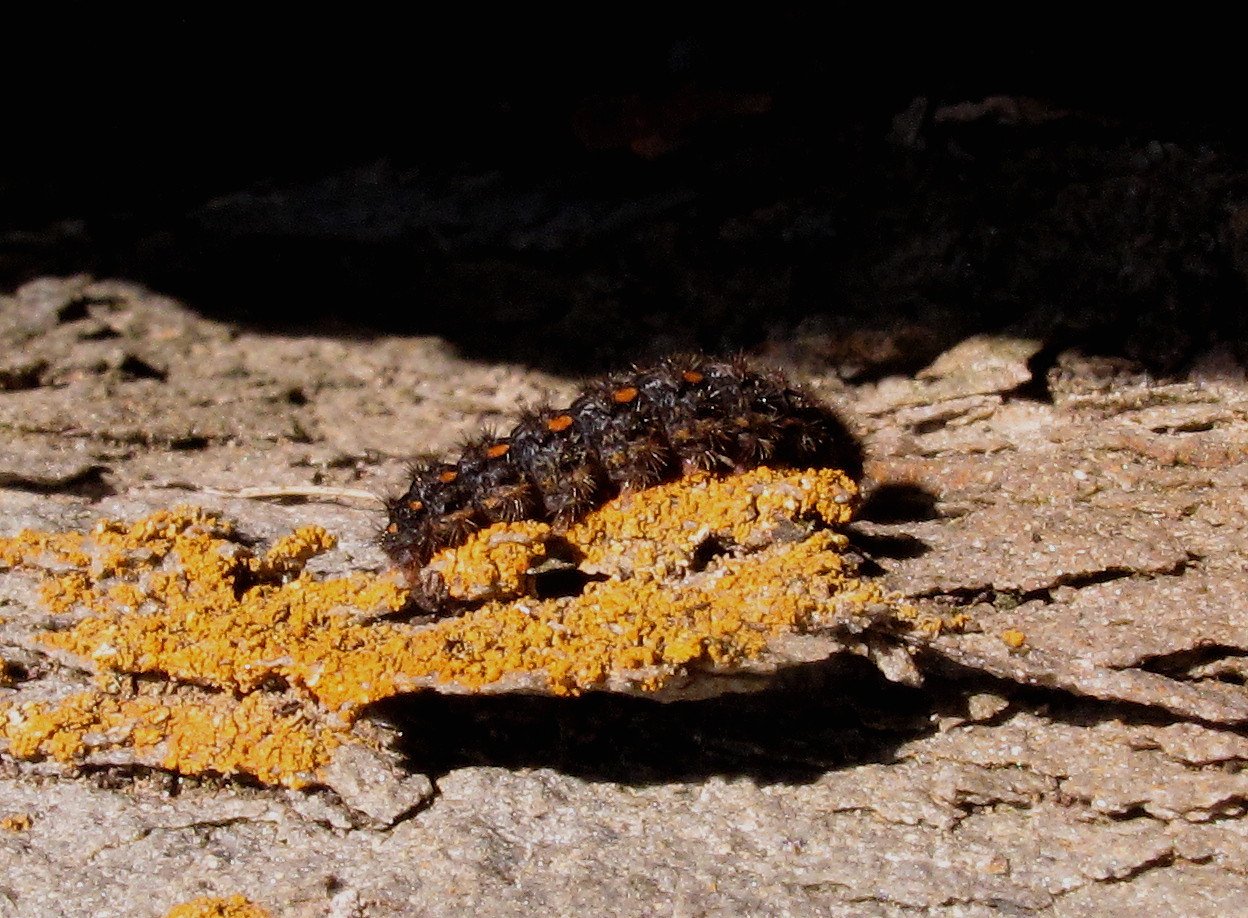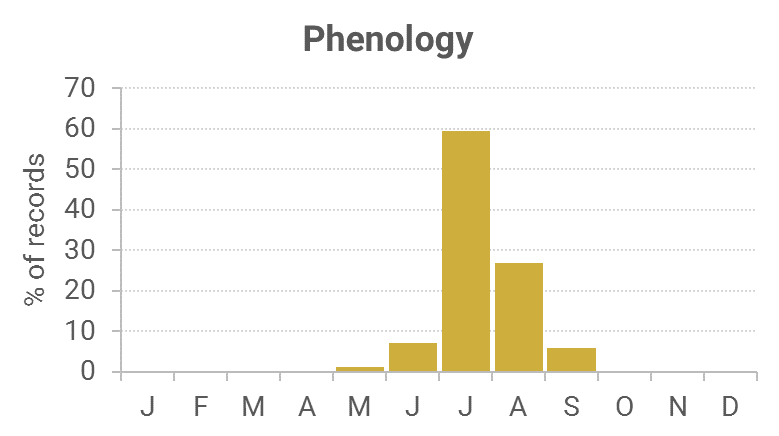Identification
With the wings wrapped around the body and the orange-yellow stripe along the costa being the same width all the way along the forewing will separate it from Common Footman. Another important feature is the complete orange-yellow collar on this species, which has a grey central portion on Common Footman.
Specimen of good quality photo required of form Northern Footman for record acceptance.
Recording Method
Attracted to light.
Life cycle
One generation. Overwinters as a small larva during August to June. Pupation takes place within a cocoon formed in plant debris or a crevice.
Larval foodplants
Lichens and algae on rocks, posts, branches and walls.
Habitat
Mainly on heathland, moorland and sand-dunes, but also woodland and gardens.
Northern Footman is only found on raised peat-bogs and boggy moorland.
History
It was not recorded in MOGBI for our Region, the nearest records being the Isle of Man and coastal north Lancashire. However, Lennon (1863) had found it not common, but had a record from Marchmount (VC72). Gordon (1913) had only a single specimen to record – from Miss D. Jackson who received one from the Mull of Galloway lighthouse.
Sir Arthur Duncan had found it at Portling (VC73) in August 1976 and Torrs Warren in 1984. B. and I. D. Wallace of the Liverpool Museum in 1985 found larvae feeding on lichens on rocks at the coast, being found at Ravenshall Point, Borness near Borgue (VC73), Port Kale and Portpatrick (VC74). These were later determined by D. Carter of the BMNH as this species.
From 1992 to 2010 there were fifty records recorded from a number of widespread coastal sites in Kirkcudbrightshire and Wigtownshire, with one inland site at Kirkland, Dumfriesshire, recording it.
Ratcliffe (2007) p. 83, says: ‘…has proved to be widespread on rocky and pebbly shorelines and even saltmarsh.’
The status of the Northern Footman f. sericea (Gregson, 1860) in Britain is unclear. However, we have had seven records, covering all three VCs, of what appears to be this form, although there is no difference in their genitalia. Their hind wings are of a darker grey though.



